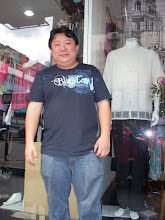




KUCHING
Described as one of the most attractive cities in Southeast Asia, Kuching is the State capital. It is a city rich in history, and modern day Kuching is a delightful blend of modern structures and old-world charm. Kuching is divided by the Sarawak River; the south is a commercial residential area, dominated by Chinese, while the north shore is predominantly Malay in character, with old kampong houses lining the river. The two parts of the city are very different in character and even have separate mayors and separate town halls.
Kuching means ‘cat’ in Malay and there are a number of suggestions as to how Sarawak’s capital acquired the name. Local legend has it that James Brooke (see section on ‘history’), pointing towards the settlement across the river, enquired what it was called. Whoever he asked, mistakenly thought he was pointing at a passing cat. If that seems a little far-fetched, the Sarawak Museum offers a few more plausible alternatives, the most likely of which is that the town may have originally have been known as Cochin – port – a word commonly used across India and Indochina.
PLACES OF INTEREST IN KUCHING
Kuching is a great starting point to explore the state and there are many sights within its compact centre, including:
Waterfront: the Waterfront has been transformed into a landscaped esplanade through restoration and a land reclamation project. It has become a popular meeting place, with food stalls, restaurants and entertainment facilities including an open air theatre. There is also a restored Chinese pavilion, an observation tower, a tea terrace and musical fountains
Chinatown: most of Kuching’s Chinese population live in the shop houses lining the narrow streets around the Main Bazaar. The street, opposite the waterfront, is the oldest in the city, dating from 1864. Kuching’s highest concentration of antique and handicraft shops is to be found here.
Also around the Main Bazaar are some other important buildings dating from the Brooke era. The Supreme Court on Main Bazaar was built in 1874 and in front of the grand entrance is a memorial to Rajah Charles Brooke (1924). The clock tower was built in 1883, and Fort Margherita in 1879 (now the Police Museum). The General Post Office, with its majestic Corinthian columns, stands in the centre of town. It was built by Vyner Brooke, the last Rajah, in 1931. Sarawak Museum: One of Kuching’s biggest attractions is an internationally renowned museum. Opened in 1891, the museum overlooks pleasant botanical gardens and the Heroes Memorial, built to commutate the dead of the Second World War.
The oldest Chinese temple in Kuching, Tua Pek Kong, in the shadow of the Hilton, was built in 1876, although it is now much modernised. The first structure was erected by a group of Chinese immigrants thankful for their safe journey across the hazardous South China Sea. New immigrants still come here to give thanks for their safe arrival.
The Astana, was built in 1870, two years after Charles Brooke took over from his uncle, and stands on the north bank of the river almost opposite the market on Jalan Gambier. Today it is the official residence of the governor of Sarawak.
The new State Mosque is also situated across the river at Petra Jaya and was completed in 1968. It stands on the site of the older mosque dating from the mid-19th century.
Sunday Market: Kuching’s best market, and also one of the best in Sarawak, is along Jl Satok. The market actually begins late on Saturday afternoon, when villagers bring in their produce and livestock and start trading. They sleep at their stalls and resume trading at around 5am on Sunday.
Churches, mosques and temples: Kuching’s cosmopolitan make up is immediately evident from its religious architecture: Chinese, and Hindu and Sikh temples, the imposing state mosque and Roman Catholic and Protestant Churches.
PLACES OF INTEREST AROUND KUCHING
Within easy reach is the Semenggoh Orang-Utan Sanctuary and the national parks of Gunung Gading, Kubah and Tanjung Datu National Park, North of Kuching is the Damai Peninsula and Bako National Park on the Muara Tebas Peninsula.
Kubah National Park: 20 km west of Kuching covering some 2230 hectares with three mountains: Gunung Serapi, Gunung Selang and Gunung Sendok. The Matang Wildlife Centre is part of the Kubah National Park and the key attraction is the orang-utans which are rehabilitated for release back into the wild.
Semeggoh Orang-Utan Sanctuary: 32 km from Kuching, became the first forest reserve in Sarawak when 800 hectare of jungle were set aside by Rajah Vyner Brooke in 1920. Although Sepilok in Sabah has taken over as Borneo’s main orang-utan rehabilitation centre, and much of Semeggogh’s rehabilitation work has transferred to the Matang Wildlife Centre, orang-utans still visit the Semeggogh centre for food handouts.
Gunung Gading National Park: Gunung Gading National Park was constituted in 1983 and covers 411,1060 hectares either side of Sungai Lundu, 65 km north of Kuching. The Rafflesia, the largest flower in the world, is found in the park.


No comments:
Post a Comment